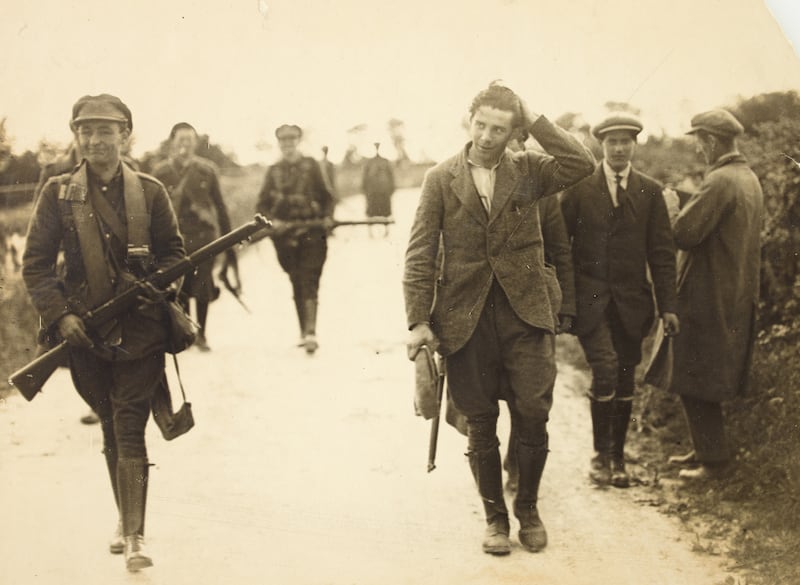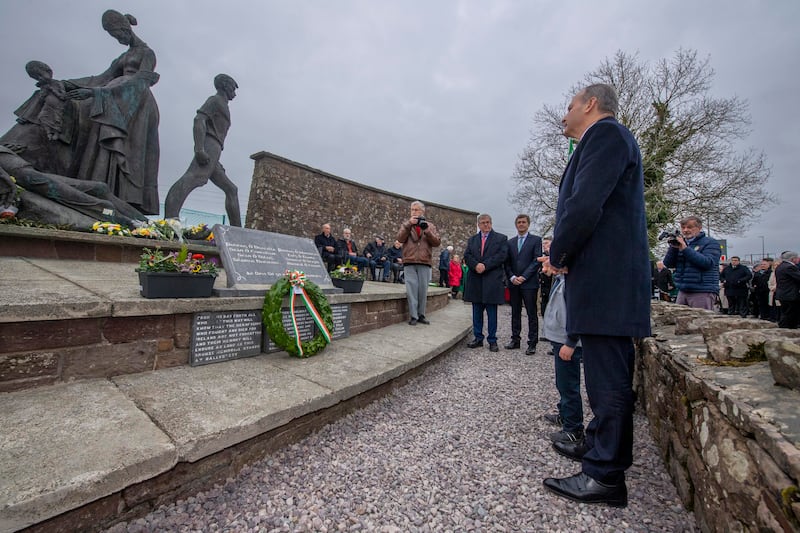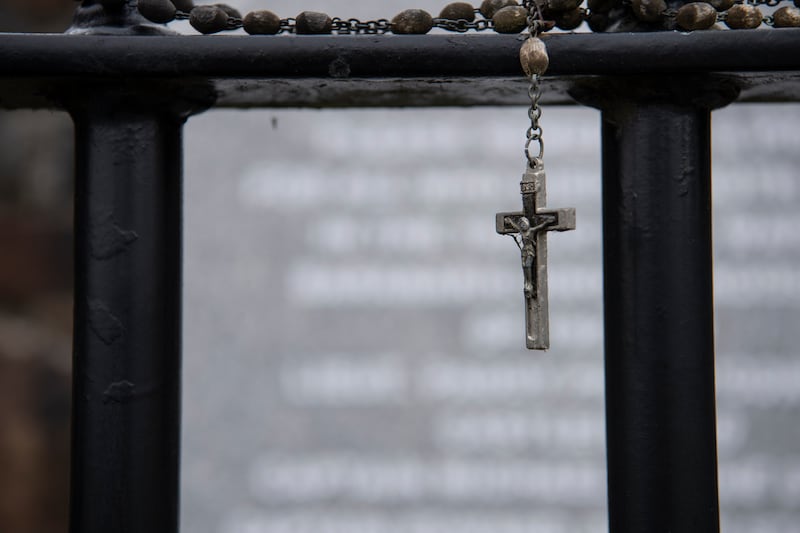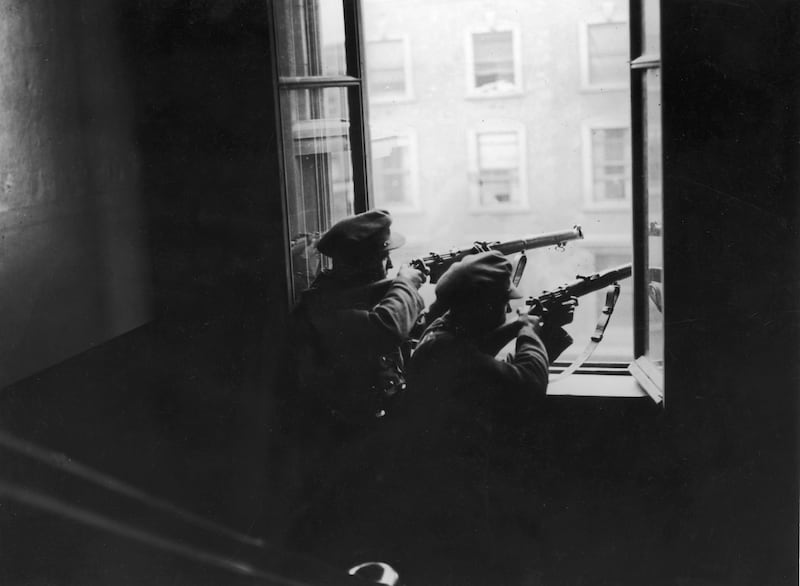By the beginning of 1923 the Civil War was over in many parts of the country but in the southwest the conflict continued for many more months, ensuring that Kerry would long be synonymous with the most bitter and violent episodes of the war.
[ Read the complete Century: 1923 Birth of a Nation seriesOpens in new window ]
Why was Kerry the location of the most acrimonious divisions and some of the most barbaric acts of the Civil War and why did the fighting go on there for so long?
‘Munster republic’
Geography was certainly a factor. The borderline of the so-called ‘Munster republic’ moved gradually south-westward as the National Army took control of the country, leaving the Kerry IRA as one of the last bastions of republican activity into the early months of 1923.
The arrival of members of the Dublin Guard and the First Western Division of the National Army in Kerry in a series of seaborne landings in August 1922 had brought a swift end to the so-called conventional phase of the war. Within weeks, the army was in control of the large towns. Critically, however, the anti-Treaty IRA remained dominant in rural Kerry, which was alien to so many in the army.
Guerrilla warfare followed, with the IRA launching a series of ambushes and attacks on National Army patrols, on the one hand, and army-led sweeps of rural areas which often led to casualties on both sides, on the other. The IRA also engaged in a widespread campaign of destruction of bridges, roads and railway lines in an effort to disrupt army movements but this had major consequences for the civilian population, too, with food supplies, transport and communications often disrupted or delayed.

Battle hardened
The promotion of Paddy O’Daly to head of the Kerry command of the army in January 1923 was a crucial moment. O’Daly, a key member of Michael Collins’s elite fighting unit, the Squad, during the War of Independence, was particularly determined to crush the anti-Treatyites in Kerry. Along with other battle-hardened officers like Ned Breslin and David Neligan, he approached the war in Kerry with a particular ruthlessness and appetite for vengeance.
There were particularly savage killings on both sides of the conflict. Two off-duty medics with the National Army were shot by an IRA sniper as they stepped from a boat on to Inisfallen Island near Killarney. A 17-year-old member of Na Fianna was summarily executed on the steps of the Great Southern Hotel in the town. Several IRA prisoners were tortured and killed, often on the whim of an army officer and without recourse to any semblance of a trial.
‘Terror month’
March 1923 became known as Kerry’s ‘terror month’ as the spiral of violence reached new depths of depravity and viciousness. Five National Army soldiers were killed in an IRA booby-trap mine explosion on March 6th near Knocknagoshel, among them Lt Paddy O’Connor, who was decapitated. It was the highest death toll in the army in six months.

Paddy O’Daly and his officers were enraged. He ordered that any obstructions on public roads which might contain mines or explosives should be removed by IRA prisoners. The following night, nine republican prisoners, who had been beaten and abused, were taken by lorry to Ballyseedy cross near Tralee. They were ordered to move a barricade of stones on the road. The prisoners were tied to the rubble – which contained a mine planted there by O’Daly’s men – and were blown up. Eight men died. Remarkably, one of the prisoners, Stephen Fuller, survived.
The following night a similar fate befell four prisoners when they were killed on a railway bridge near Killarney and one week later five IRA Volunteers were killed in an explosion at Bahaghs near Cahersiveen. A total of 17 prisoners had been executed in retaliation for what had occurred at Knocknagoshel. It was the darkest period in the war in Ireland.

Cover-up
The National Army covered up what had occurred in all three incidents, insisting the explosives had been planted in each case by the IRA with the aim of killing soldiers. The Minister for Defence, Richard Mulcahy, stood by his soldiers in Kerry, effectively condoning extrajudicial murder in the name of his government.
Even after the death of IRA leader Liam Lynch, the fighting in Kerry continued. A group of IRA members were besieged in a remote rural cave on a cliff-face at Clashmealcon, overlooking the Atlantic Ocean. In the dramatic days that followed, two Free State soldiers died, two IRA men drowned, another fell as the rope which he was climbing was cut and a further three republicans were executed at Tralee jail. Two days after the executions the Civil War came to an end.
The Civil War in Kerry claimed at least 175 lives, among them 14 innocent civilians. For survivors, relatives and the wider community, the physical, emotional and psychological scars ran deep and lasted for generations.

Lasting scars
Military pension applications testify to the fact that there was no monopoly of suffering after the war. National Army families as well as those of the IRA often faced enormous misery, intimidation, ill health and nervous breakdown for decades afterwards. Many combatants’ families on both sides were left penniless. The scars lasted for decades in a county in which the horrors of the war remained unspoken about for so long.
Owen O’Shea is a historian and author of No Middle Path: The Civil War in Kerry, published by Merrion Press
In the classroom: Kerry and the Civil War
The final months of the Civil War saw some of its most brutal acts take place in Co Kerry, incidents which remain controversial today.
– How do you think these events in 1923 should be commemorated?
– What kind of sensitivities are there today?
– Do the events of 1923 in Co Kerry make the Civil War more difficult to commemorate than other key events from 1911- 1923?











